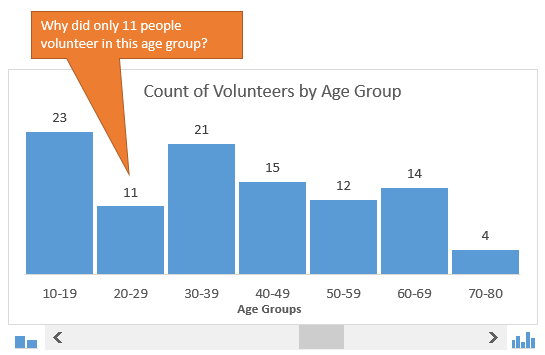

That said, you can customize the most important thing – how Excel bins data. The histogram chart offers very few customization options (compared to other charts like column / scatter plot etc.). You will get histogram of call duration with default binning ( using Scott’s normal reference rule).


Using these you can quickly make a histogram and understand the frequency distribution and outliers. But in Excel 2016, Microsoft introduced various new charts including Histograms and Pareto charts. This is where you take raw data and calculate the frequencies by bins. Prior to Excel 2016, making histograms involved an intermediate calculation step. Histograms are a great way to explore the underlying distribution of values. If you visualize the distribution of calls by duration like below, you will get a better picture. If you just average all call lengths, you might get some value like 90 seconds. You have the call log from last month and you want to know how long customers talk to your representatives. Let’s say you run a customer care center. Histogram chart shows distribution of data by grouping it in to bins (range of values). Sounds interesting? Let’s get started then.


 0 kommentar(er)
0 kommentar(er)
